CE Certified Laminated Glass Machine for Building Glass (SN-BGF3060)
Usage of SINOMAC Glass Autoclave
When two or more pieces of glass are sandwiched with a polymer plastic film material, after initial pressing, they are placed into the autoclave for full heating and pressurization, resulting in a laminated safety glass product. The process of the intermediate membrane inside the autoclave is crucial for achieving high-quality results. In fact, the role of the SINOMAC glass autoclave is to ensure that the product meets quality requirements, stability, and process standards, maintaining high-quality output consistently.
SINOMAC glass autoclaves are widely used in architecture, automotive, and solar industries.
General Features and Working Curve
The entire operation process of the SINOMAC Glass Autoclave consists of six segments: pre-heating and pre-pressing, first temperature and pressure holding, heating and pressurizing, second temperature and pressure holding, cooling, and air exhaust. Throughout the process, temperature and pressure in each segment are monitored by HIM or PC, and the operation is carried out using our exclusive TPC (Thermal Processing Control) software based on a PLC control system, ensuring full automation.
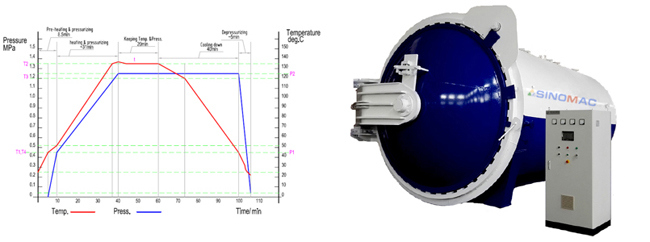
Technical Description
1. Quick Opening Door
- The system includes three parts: a gear flange, driving device, and sealing ring.
- Hydraulically operated door opening and closing.
- The sealing ring is made of silicon rubber.
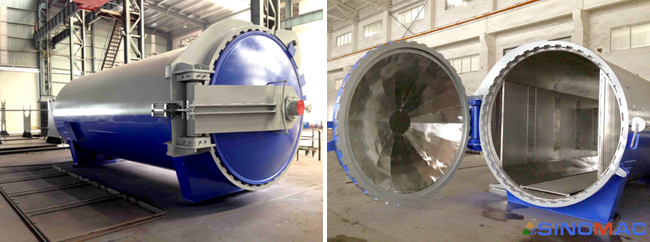
2. Insulation System
- Insulation: Internal insulation
- Insulation material: Aluminum silicate + rock wool
- Internal sheet metal: Stainless steel, 0.8 mm
- Insulation thickness: 80mm
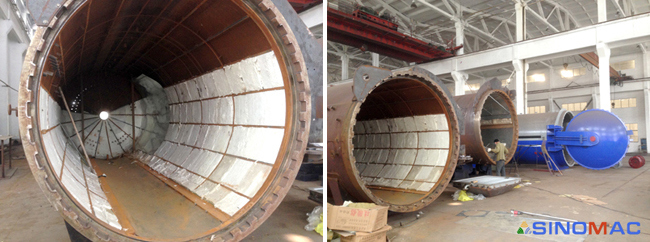
3. Floor Supports and Rails
- Rail loading: 20,000kg, optional higher load available.
- Rail type: Unequal angle steel
- Floor loading: 400kg, optional higher load available.
- Floor support form: Mild steel checkered plate
4. Heating System
- The system includes main and auxiliary heating zones. Heaters are located at the rear and sides of the duct to ensure uniform temperature during heating.
- Electric heating via Inconel tubular heaters.
5. Cooling System (Heat Exchange)
- Main heat exchanger: Aluminum finned tube, located at the rear of the autoclave.
- Auxiliary cooling system: Aluminum finned tube, mounted on the side wall for easy maintenance.
6. Forced Convection System
- Circulating fan parameters:
 Power: 22 kW,
 Connection: Direct-connected,
 Rated speed: 960 r/min (400V/50Hz),
 Fan wheel: 7# centrifugal impeller,
 Wind pressure: 1100 Pa,
 Flow rate: 14400 m³/h.
- Shaft sealing: Mechanical seal, silicon carbide-graphite materials for static and dynamic rings, with high-temperature bearings.
7. Temperature Monitoring Components
- Air temperature thermocouples: 3, PT100, including HMI monitoring, data acquisition, and control.
- High-limit thermocouple: 1, PT100, including HMI monitoring/control.
8. Vacuum System
   Vacuum source ports: 6 total.
9. Control System
- Based on research and development in the glass processing industry, the control system includes PLC central control, touch screen (HIM) operation, and network. The system operates using the exclusive TPC (Thermal Processing Control) software.
- It can insert or save production processes, display pressure and temperature curves anytime; its paperless record function allows recording, saving, and checking of process curves and parameters.
- Advanced TPC software enables precise control of temperature and pressure according to set curves, with over-temperature and overpressure alarms and various safety features.
- Users can log in, input product information, and perform intranet or remote control.
- It supports data output, printing, and analysis to improve product quality.
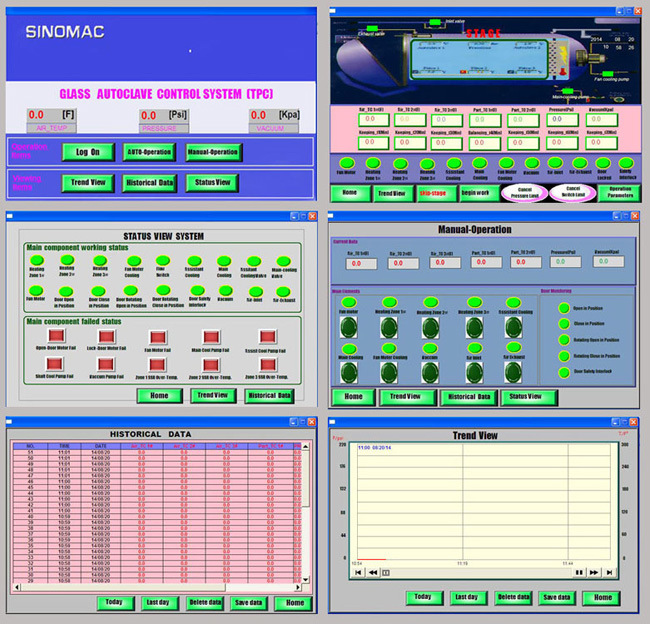
Foundation and Installation
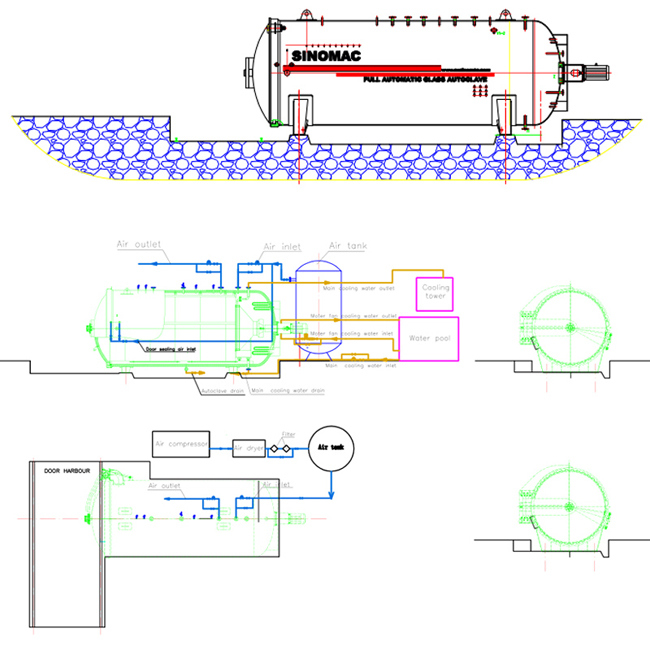
Autoclave Specification
Â
| MODEL#SN-BGF3060Â GLASSÂ AUTOCLAVE_TECHNICALÂ PARAMETER | |||
| No. | Description | Unit | Specifications and Parameters |
| 1 | Inner Diameter | mm | 3000 |
| 2 | Working Length | mm | 6000 |
| 3 | Max. Glass Size | mm | 2650X6000 |
| 4 | Autoclave Track Distance | mm | 1000 |
| 5 | Track Height | mm | 480 |
| 6 | Design Pressure | Mpa | 1.5 |
| 7 | Design Temperature | ºC | 160 |
| 8 | Working Pressure | Mpa | 1.3 |
| 9 | Working Temperature | ºC | 150 |
| 10 | Safety Valve Exhaust | Mpa | 1.4 |
| 11 | Working Medium | --- | Compressed Air |
| 12 | Heating Mode | --- | Electric(Convection+Radiation ) |
| 17 | Heater | --- | Inconel Tubular Heaters |
| 18 | Heating Power | KW | 198 |
| 19 | Circulating Fan Motor Power | KW | 22 |
| 20 | Thermocouple type | --- | K or PT100 |
| 21 | Air Temperature Thermocouples | Piece | 3 |
| 23 | Pressure Transducer | Piece | 1 |
| 24 | Vaccum Lines | Piece | 6 |
| 25 | Control Mode | --- | PLC+PC |
| 26 | Control Software | --- | Thermal Processing Control (TPC) |
| 23 | Insulation | --- | Internal |
| 24 | Supporting Air Tank | M³ | 3 |
| 25 | Working Environment Temperature | ºC | Min. -20ºC, max.+45ºC |
| 26 | Working Environment Humidity | --- | < 60% |
| 27 | Power Supply | --- | 220/380VAC, 3P+N+PE, 50/60Hz |
| 28 | Weight | KG | 21490 |
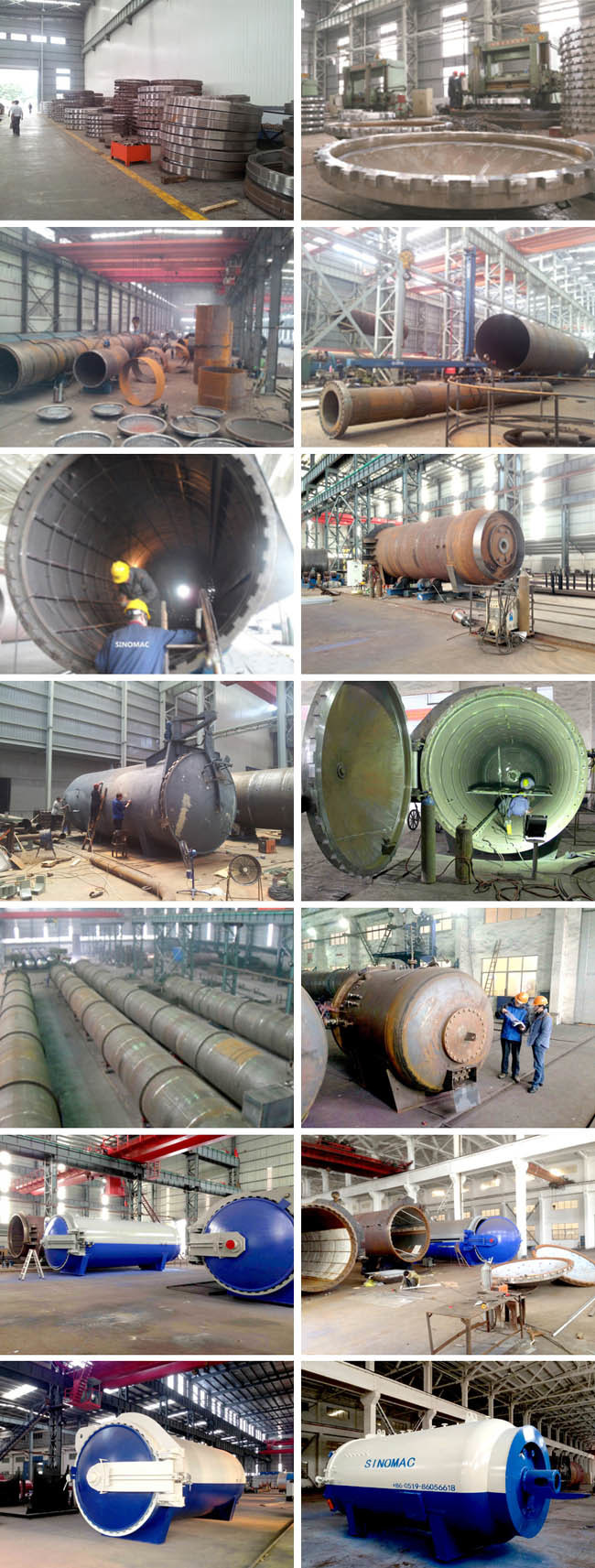
From the SINOMAC team, with 15 years of experience.
Excavator Cylinder Piston Rod Seals
Installation and application of piston rod seal for excavator hydraulic cylinder
The installation and application of hydraulic cylinder piston rod seals in excavators mainly include the following aspects:
1. Applying lubricating oil: Before installing the seal, the surface of the piston rod must be coated with lubricating oil to facilitate the installation and use of the seal.
2. Install the seal: Install the seal on the piston rod in sequence, taking care not to pinch or bend the seal.
3. Pressing the seal: After installing the seal, special tools need to be used to press the seal tightly to ensure its tightness and stability.
4. Check the sealing effect: After installing the sealing element, it is necessary to check the sealing effect. It can be detected by observing the working status of the hydraulic cylinder or using tools such as leak detectors.
5. Application scenario: The piston rod seal of excavator hydraulic cylinder is mainly used in the hydraulic system of construction machinery such as excavators, loaders, and bulldozers to prevent hydraulic oil leakage and ensure the normal operation of the machine.
In summary, the installation and application of hydraulic cylinder piston rod seals in excavators is a very important part of the hydraulic system, and must be strictly operated in accordance with regulations to ensure the normal operation and safety of the machine.
Excavator hydraulic cylinder piston rod seal, hydraulic cylinder piston seal, sealing kit
Safe Seal Technology Co., Ltd. , https://www.sprsealkits.com